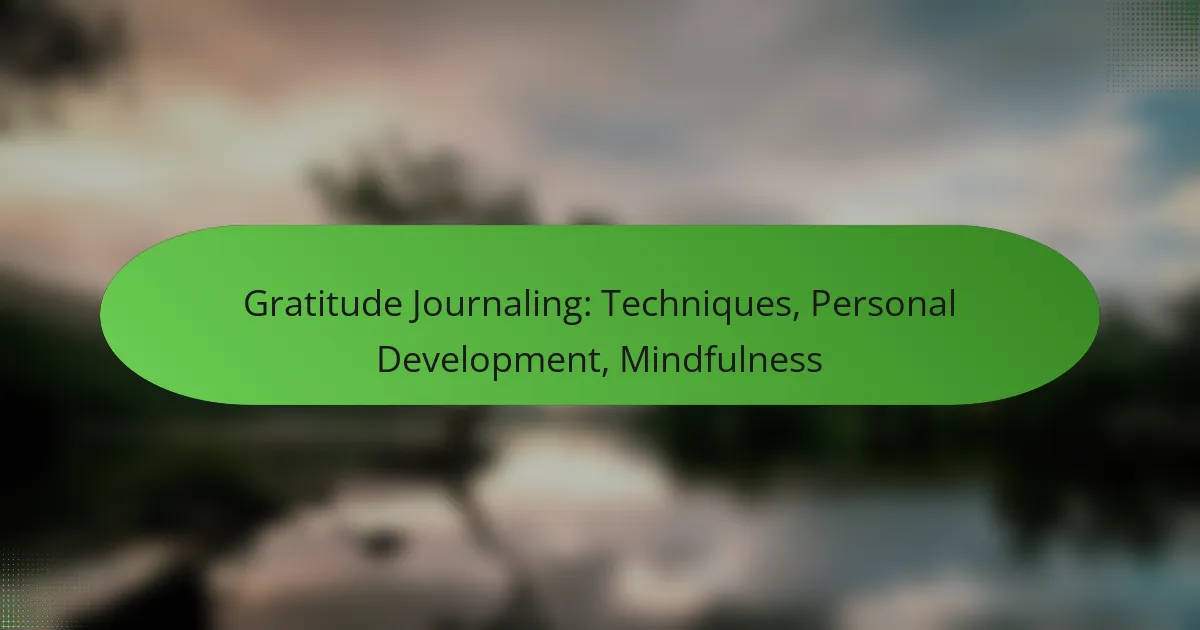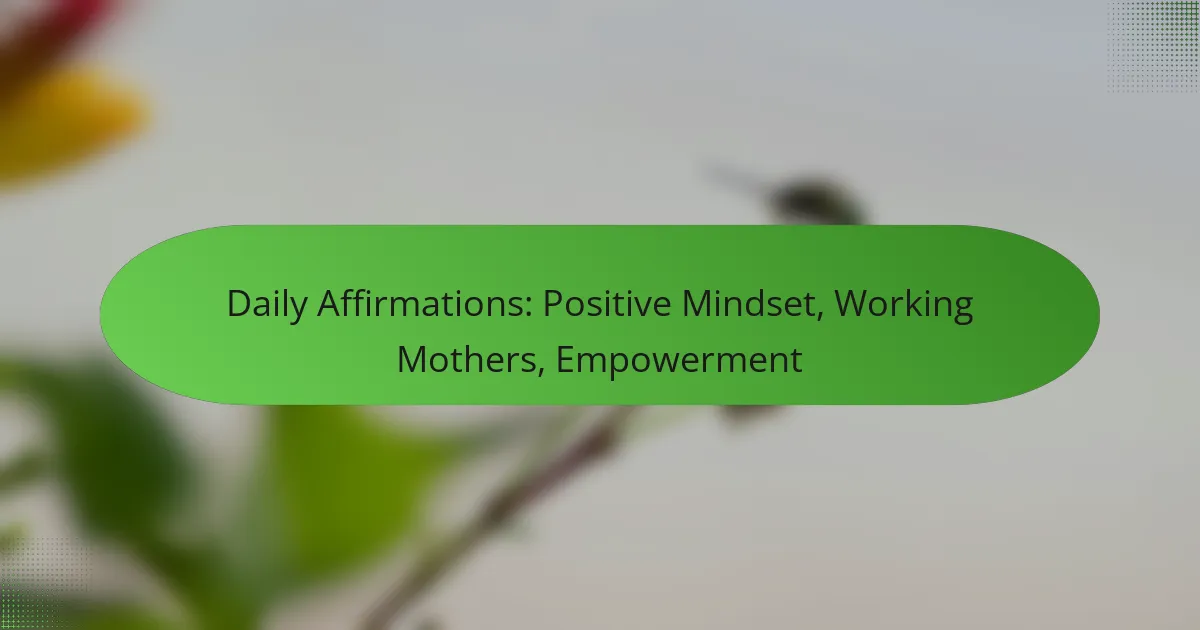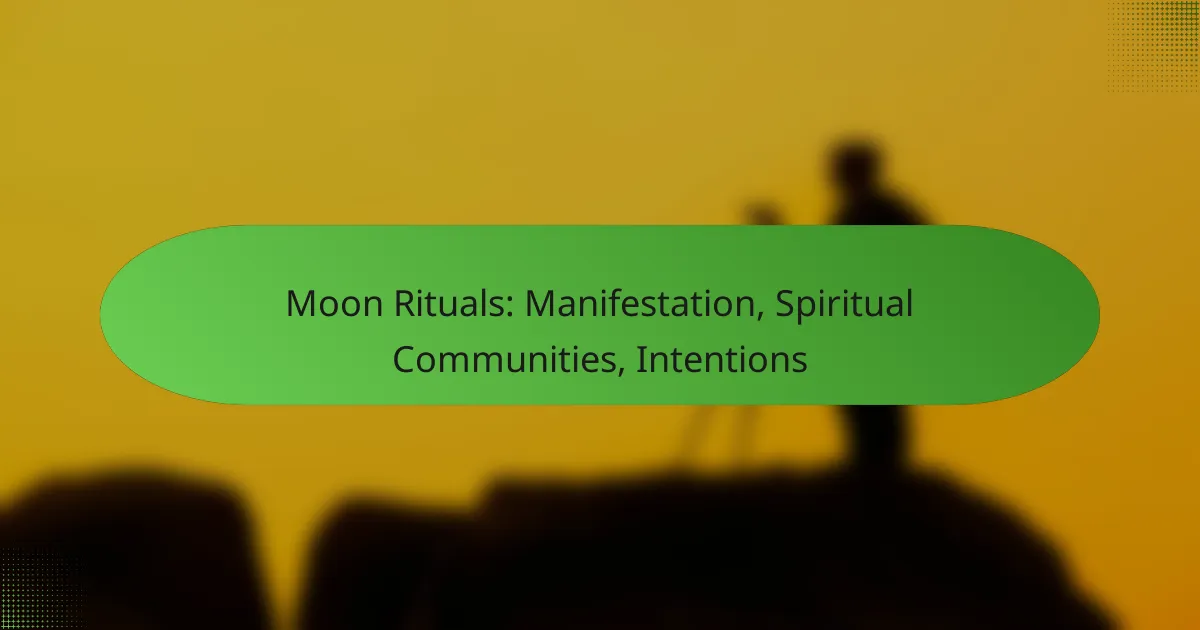Gratitude journaling is a powerful tool for personal development, promoting emotional well-being and a deeper understanding of oneself. By regularly reflecting on positive experiences, individuals can enhance their mindfulness and cultivate a more fulfilling life, ultimately fostering a positive mindset and greater awareness of their thoughts and feelings.
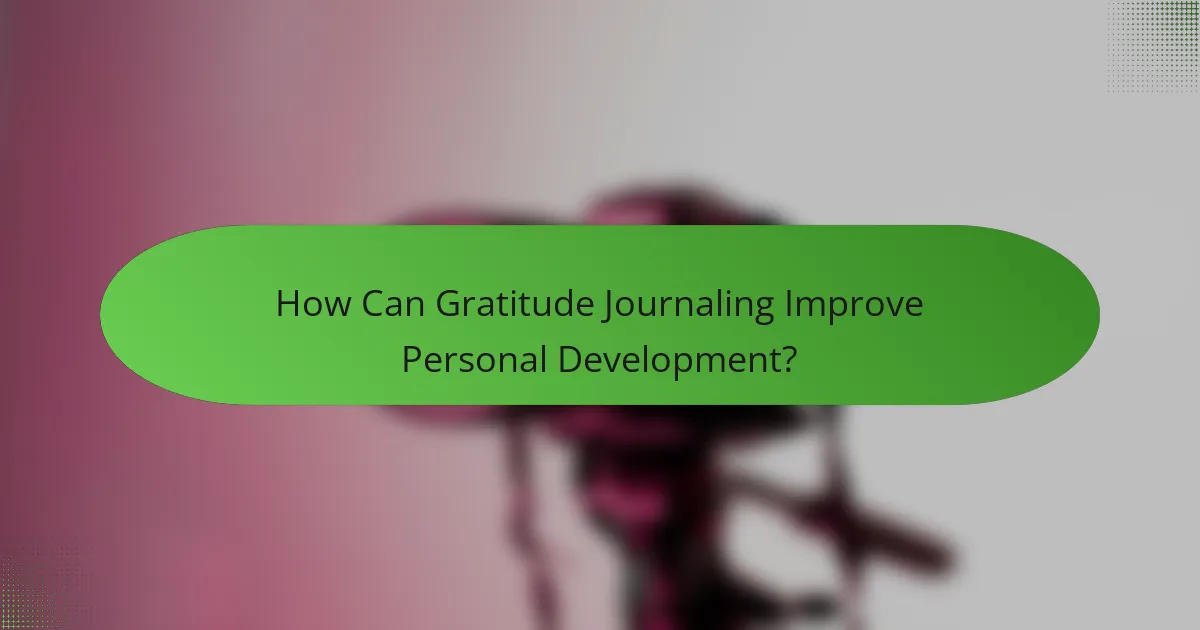
How Can Gratitude Journaling Improve Personal Development?
Gratitude journaling can significantly enhance personal development by fostering a deeper understanding of oneself and promoting emotional well-being. By regularly reflecting on positive experiences, individuals can cultivate a more fulfilling and balanced life.
Enhances self-awareness
Gratitude journaling encourages individuals to reflect on their thoughts and feelings, leading to greater self-awareness. By identifying what they are thankful for, people can uncover their values and priorities, which can guide their personal growth.
To enhance self-awareness, set aside time each day to write about specific moments or people that brought joy. This practice can help clarify what truly matters in one’s life.
Boosts emotional resilience
Regularly practicing gratitude can strengthen emotional resilience by shifting focus from negative experiences to positive ones. This shift helps individuals cope better with stress and adversity, making challenges feel more manageable.
To build emotional resilience, try writing down three things you are grateful for each day, especially during tough times. This simple act can create a buffer against negative emotions.
Fosters positive mindset
Gratitude journaling fosters a positive mindset by training the brain to recognize and appreciate the good in life. This practice can lead to improved mental health and a more optimistic outlook.
To cultivate a positive mindset, include specific details in your journal entries about what made you feel grateful. This specificity can deepen the impact of the practice and reinforce positive thinking.
Improves relationships
Expressing gratitude can enhance relationships by promoting feelings of connection and appreciation. When individuals acknowledge the contributions of others, it strengthens bonds and fosters a supportive environment.
To improve relationships, consider writing thank-you notes or sharing your gratitude verbally with friends and family. This can lead to more meaningful interactions and a stronger sense of community.
Increases motivation
Gratitude journaling can boost motivation by highlighting achievements and positive experiences. Recognizing progress can inspire individuals to pursue their goals with renewed energy and commitment.
To increase motivation, reflect on past successes in your journal and how they made you feel. This reflection can serve as a powerful reminder of what you are capable of achieving.
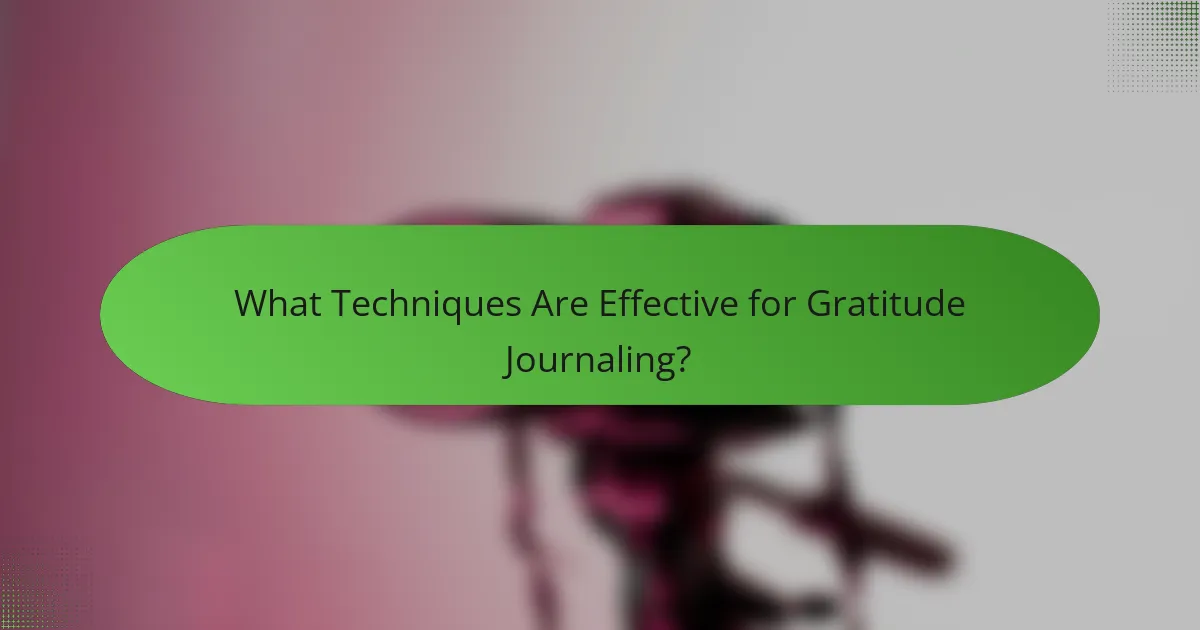
What Techniques Are Effective for Gratitude Journaling?
Effective gratitude journaling techniques can enhance your mindfulness and personal development by fostering a positive mindset. These methods encourage regular reflection on the things you appreciate, helping to cultivate a deeper sense of gratitude.
Daily prompts
Daily prompts are specific questions or statements that guide your reflections in a gratitude journal. For example, you might write about one thing that made you smile today or list three people you are thankful for this week. Using prompts can help you focus your thoughts and make gratitude a daily habit.
To maximize their effectiveness, consider varying your prompts regularly. This keeps the practice fresh and encourages deeper introspection. You can create a list of prompts to draw from or find resources online that provide new ideas each day.
Three good things method
The three good things method involves writing down three positive events or experiences from your day. This technique encourages you to focus on the positive aspects of your life, no matter how small. It can be as simple as enjoying a warm cup of coffee or receiving a compliment.
To implement this method, set aside a few minutes each evening to reflect on your day. Over time, this practice can help shift your perspective and increase overall happiness. Aim to write down your three good things consistently for several weeks to notice significant changes in your mindset.
Gratitude letters
Writing gratitude letters involves composing a letter to someone who has positively impacted your life. This can be a friend, family member, or mentor. Expressing your appreciation in writing not only strengthens your relationship but also reinforces your feelings of gratitude.
When writing a gratitude letter, be specific about what the person did and how it affected you. Consider reading the letter to them in person or sending it as a surprise. This practice can deepen connections and enhance your own sense of fulfillment.
Visual gratitude boards
Visual gratitude boards are creative displays that showcase images, quotes, or items representing things you are thankful for. You can create a physical board using a corkboard or poster, or opt for a digital version using apps or social media platforms.
To make a visual gratitude board, gather materials that resonate with you, such as photos from memorable moments or inspirational quotes. Place your board in a visible area to serve as a daily reminder of the positive aspects of your life. Regularly updating the board can keep your gratitude practice engaging and dynamic.

How Does Gratitude Journaling Relate to Mindfulness?
Gratitude journaling is closely tied to mindfulness as it encourages individuals to focus on the present moment and acknowledge positive aspects of their lives. By regularly reflecting on what they are thankful for, practitioners cultivate a deeper awareness of their thoughts and feelings, enhancing their overall mindfulness practice.
Encourages present-moment awareness
Gratitude journaling fosters present-moment awareness by prompting individuals to reflect on their daily experiences. This practice encourages them to notice and appreciate small joys, such as a warm cup of coffee or a kind word from a friend. By focusing on these moments, individuals can train their minds to stay engaged in the here and now.
To effectively enhance present-moment awareness, set aside a few minutes each day to write down three things you are grateful for. This simple exercise can help shift your focus from negative thoughts to positive experiences, reinforcing mindfulness.
Reduces stress and anxiety
Engaging in gratitude journaling can significantly reduce stress and anxiety levels. By concentrating on positive aspects of life, individuals can counteract feelings of overwhelm and negativity. This shift in focus can lead to a more balanced emotional state and improved mental health.
Consider writing in your gratitude journal during particularly stressful times. This practice can serve as a grounding technique, helping to alleviate anxiety by reminding you of the good in your life. Aim to include specific examples to deepen the impact of your reflections.
Enhances emotional regulation
Gratitude journaling enhances emotional regulation by encouraging individuals to process their feelings constructively. By regularly acknowledging what they are thankful for, individuals can develop a more positive outlook, which can help them manage their emotions more effectively. This practice can lead to increased resilience in the face of challenges.
To improve emotional regulation, try to incorporate gratitude journaling into your routine, especially during difficult times. Reflecting on positive experiences can help you gain perspective and respond to emotional triggers with greater calmness and clarity.
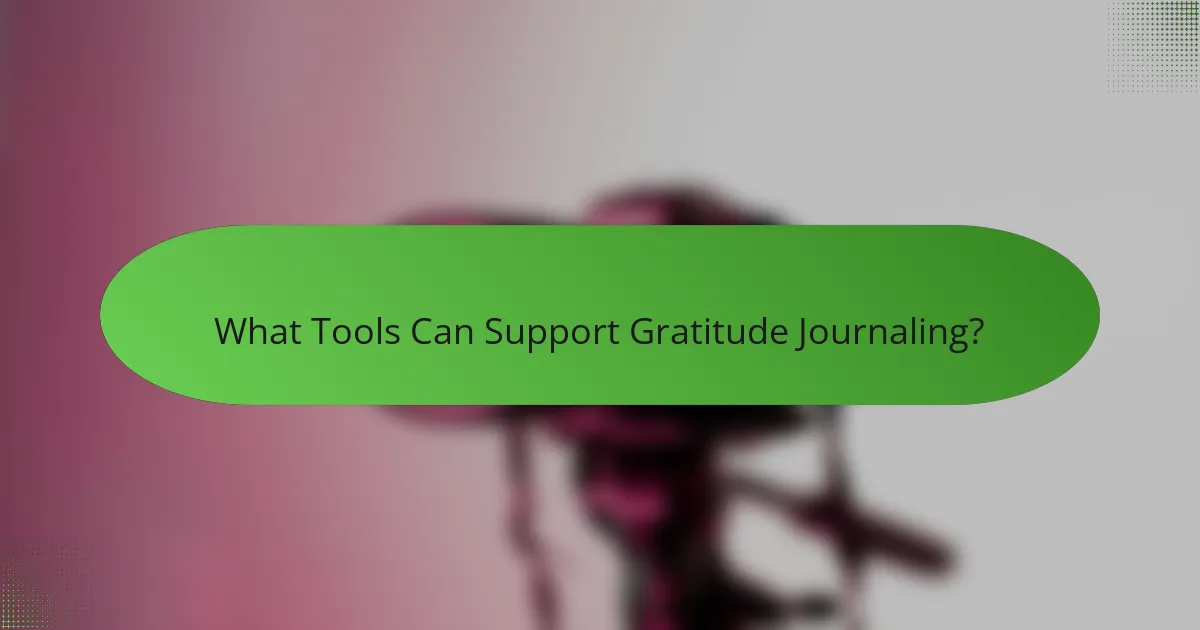
What Tools Can Support Gratitude Journaling?
Several tools can enhance your gratitude journaling practice, making it easier to reflect on positive experiences and cultivate mindfulness. These tools range from digital applications to physical templates and supportive online communities.
Gratitude journaling apps
Gratitude journaling apps are convenient digital platforms that allow you to log your daily gratitude entries on your smartphone or tablet. Popular options include apps like “Grateful” and “Day One,” which often feature prompts, reminders, and the ability to add photos to your entries.
When choosing an app, consider features such as user interface, customization options, and whether it offers reminders to encourage daily use. Many apps are free or available for a small subscription fee, making them accessible for most users.
Printable journal templates
Printable journal templates provide a tangible way to engage in gratitude journaling. You can find various designs online, from simple lined pages to more structured formats with prompts and sections for reflection.
To get started, download a template that resonates with you, print it out, and dedicate a specific time each day to fill it in. This method can be particularly beneficial for those who prefer writing by hand, as it may enhance the reflective experience.
Online communities
Online communities offer a supportive environment for individuals practicing gratitude journaling. Platforms like Facebook groups or Reddit forums allow members to share their experiences, tips, and insights, fostering a sense of connection and accountability.
Engaging with these communities can provide motivation and new ideas for your journaling practice. Look for groups that focus specifically on gratitude or personal development to ensure you are connecting with like-minded individuals.
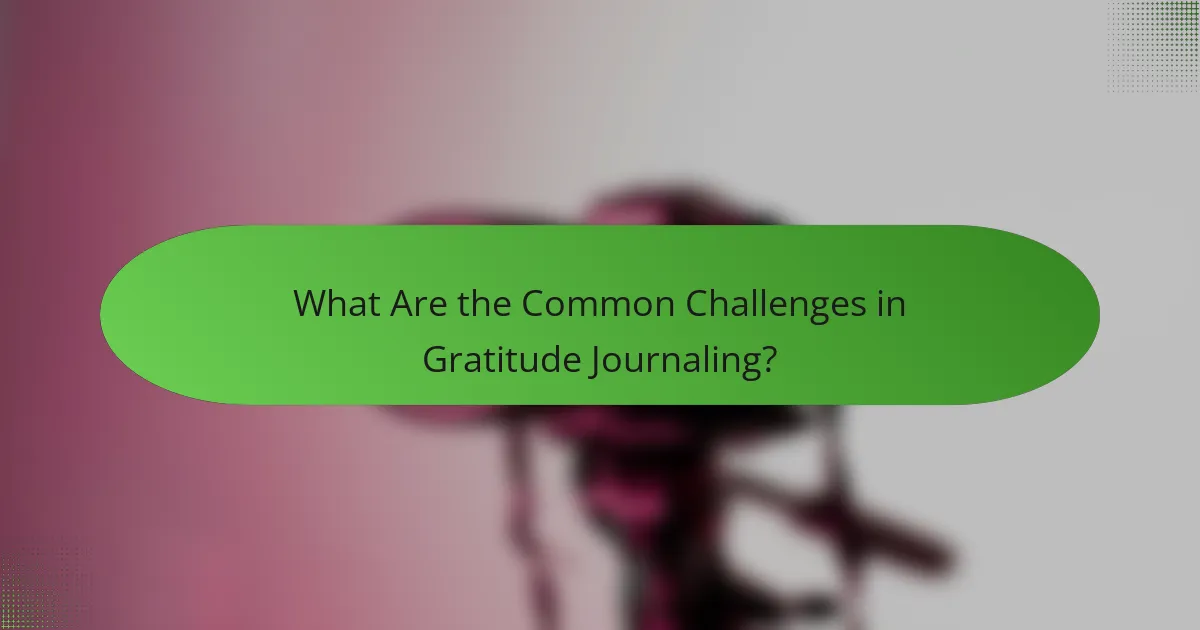
What Are the Common Challenges in Gratitude Journaling?
Gratitude journaling can be a powerful tool for personal development, but it often comes with challenges that can hinder progress. Common issues include maintaining consistency, finding meaningful prompts, and overcoming skepticism about its benefits.
Consistency issues
One of the primary challenges in gratitude journaling is maintaining consistency. Many people start with enthusiasm but struggle to keep the practice going over time. Setting a specific time each day or week for journaling can help establish a routine.
To improve consistency, consider using reminders or integrating journaling into an existing habit, such as after breakfast or before bed. Keeping the journal accessible and visible can also encourage regular entries.
Finding meaningful prompts
Another challenge is generating meaningful prompts that inspire genuine reflection. Generic prompts can lead to repetitive entries that lack depth. To combat this, try to personalize prompts based on your experiences or current emotions.
Examples of effective prompts include “What made me smile today?” or “Who am I grateful for this week?” Creating a list of prompts in advance can provide variety and keep the journaling experience fresh.
Overcoming skepticism
Many individuals may approach gratitude journaling with skepticism, questioning its effectiveness. Addressing this skepticism involves understanding the psychological benefits that gratitude can bring, such as improved mood and reduced stress.
To overcome doubts, start with small, achievable goals. Documenting even a few things you are grateful for each day can help illustrate the positive impact over time. Sharing experiences with others who practice gratitude journaling can also reinforce its value.
